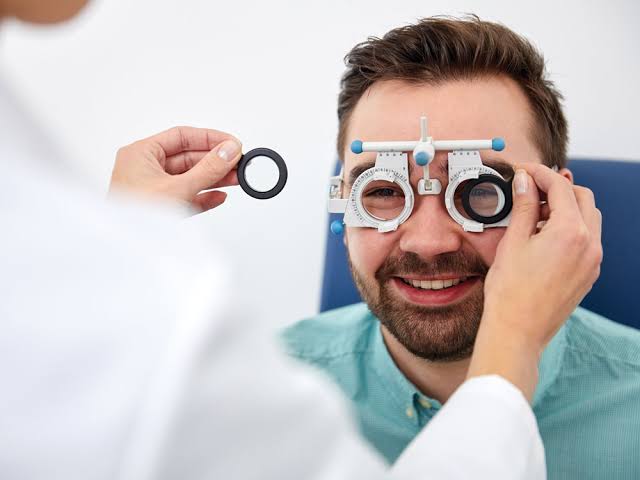Fogging Method of Subjective Refraction in Ophthalmology
Fogging method of subjective refraction allows controlling the accommodation.
In case you follow the fogging method of refraction, start with higher plus than the results of objective method of refraction in case of hypermetropia and with low plus in case of low myopia and no plus lens is needed in case of high myopia.
Most commonly Fan and Block Test is used for the fogging method of refraction. The step by step procedure is as under:
1. Occlude the left eye and put the fogging spherical trial lens in the trial frame in front of right eye as selected above and start reducing the fogging.
While reducing fogging care must be taken to put the new plus lens first and then remove the one from the trial frame and for minus lens, remove the minus lens first and then put the new one.
2. Obtain the best visual acuity using spherical lenses only, i.e. best vision sphere.
It is assumed the best vision sphere will put the circle of least confusion on the retina and the patient will report the acuity of 6/9 or more.
3. Now ask the patient to look at the Fan Chart for astigmatic correction and ask which line or group of lines appears clearest and darkest. This gives an approximate direction of the astigmatic error.
4. If no lines appears to be black than the other, there are two possibilities— eitherthe patient may not need any astigmatic correction or the eye is excessively fogged.
In case the patient identifies any one line or group of lines as darker than all others, align the Maddox Arrow with the same.
5. Now direct the patient’s attention to Maddox Arrow.
Ask him if both the limbs of the arrow are equally blurred. Rotate it away from the black limb towards the blur limb until both limbs appear equally blurred.
This gives the axis of the astigmatic correction. Care must be taken to ensure that the patient head is upright.
6. Then direct the patient’s attention to two blocks. The patient will report that one of the two blocks is clearer and darker than the other.
Add minus cylinder at the appropriate axis until the second block becomes as clearer as the first one. If this is not quite possible, over add cylinder lens by –0.25D to get the reversal.
Once the reversal is achieved, you may reduce the additional cylinder lens added and go one step down.
Remember it is always better to under correct than to overcorrect, leaving the initial block clearer than the other.
7. Finally, with corrected sphere and cylinder ask the patient to look back to Snellen’s chart to refine the spherical. Do not continue reducing plus unless you are very sure that they really need it to see clearly.
Similarly do not go on adding minus as well, it will not make the letters clearer, rather letters will become sharp black and small.
The goal is to find “maximum plus to best acuity” or “minimum minus to best acuity”.
8. A simple fogging with +0.50Dsph and then reducing fogging at the step of 0.25 step may be applied.
At this stage it is quite likely that unfogging another 0.25D may also yield 6/6 acuity.
A clinical judgment based on patient’s past correction and his visual demands may help.

